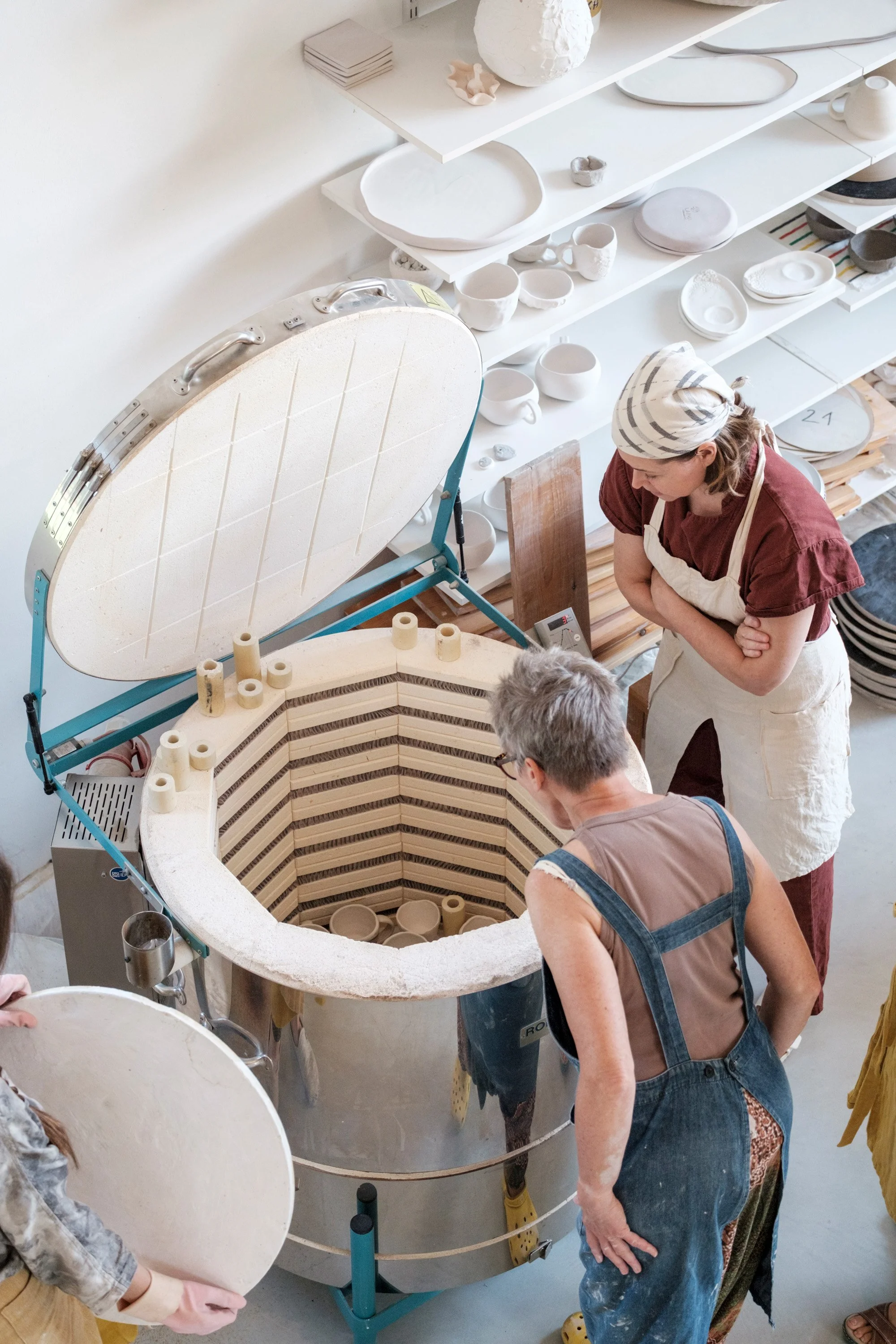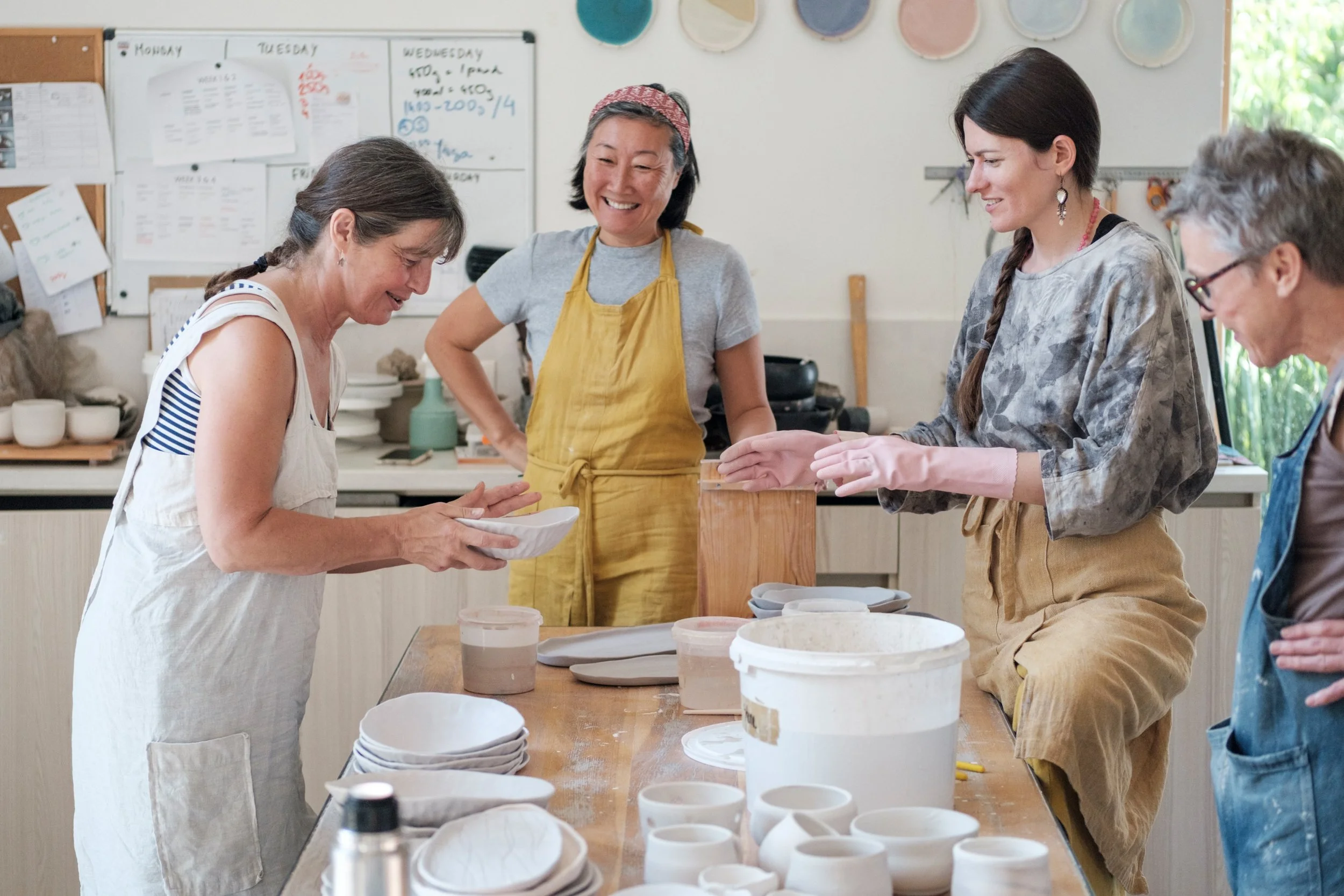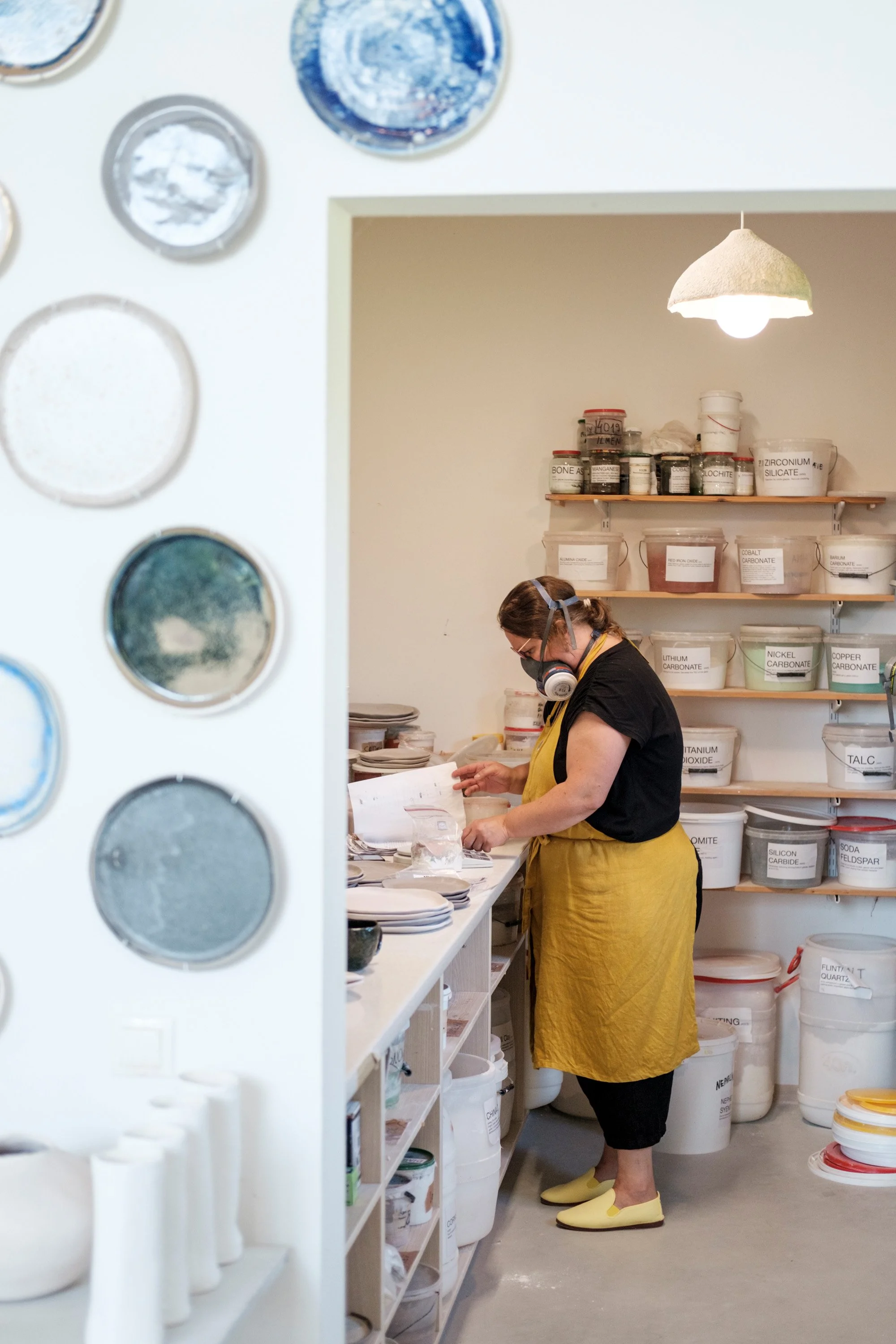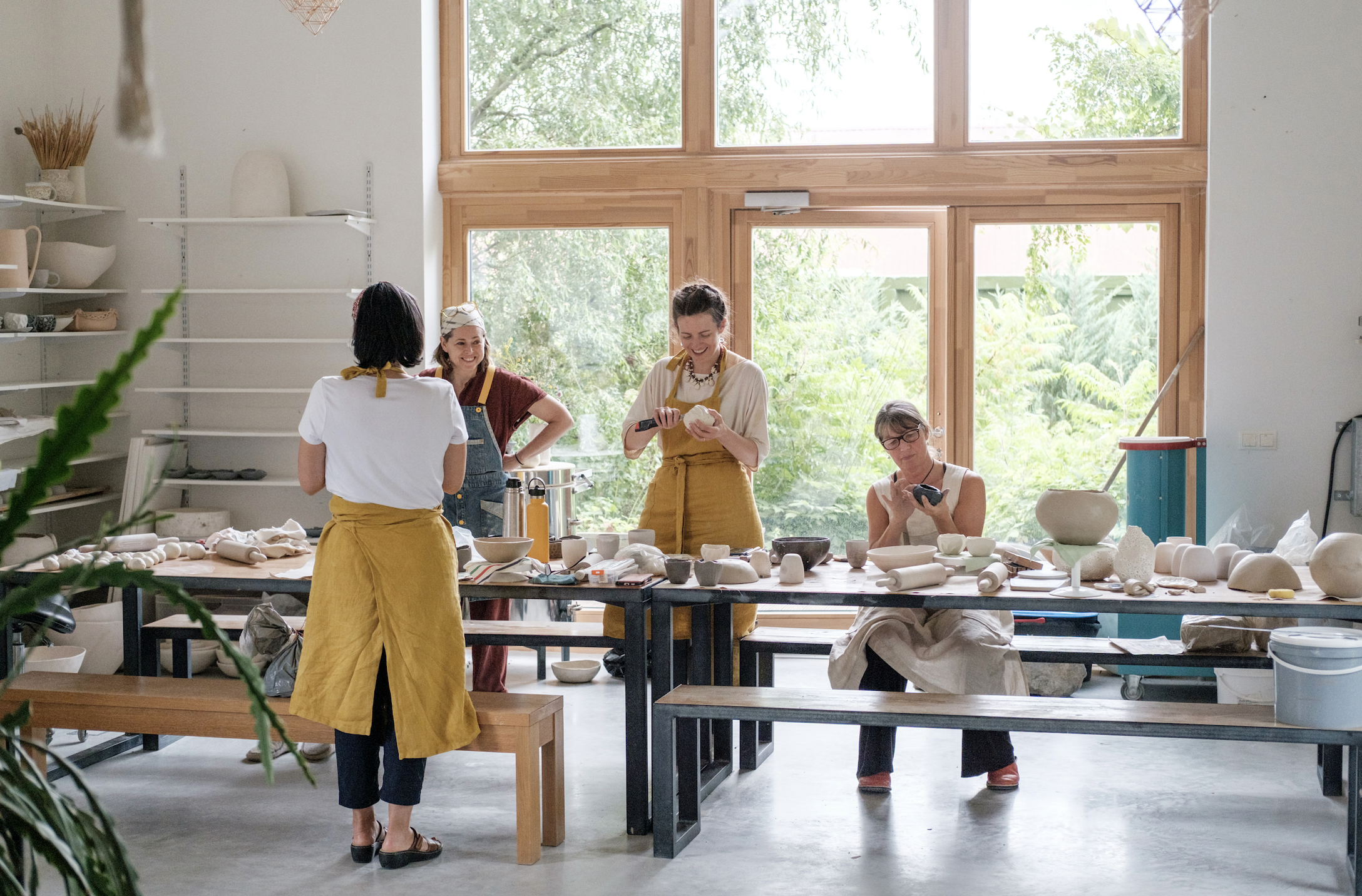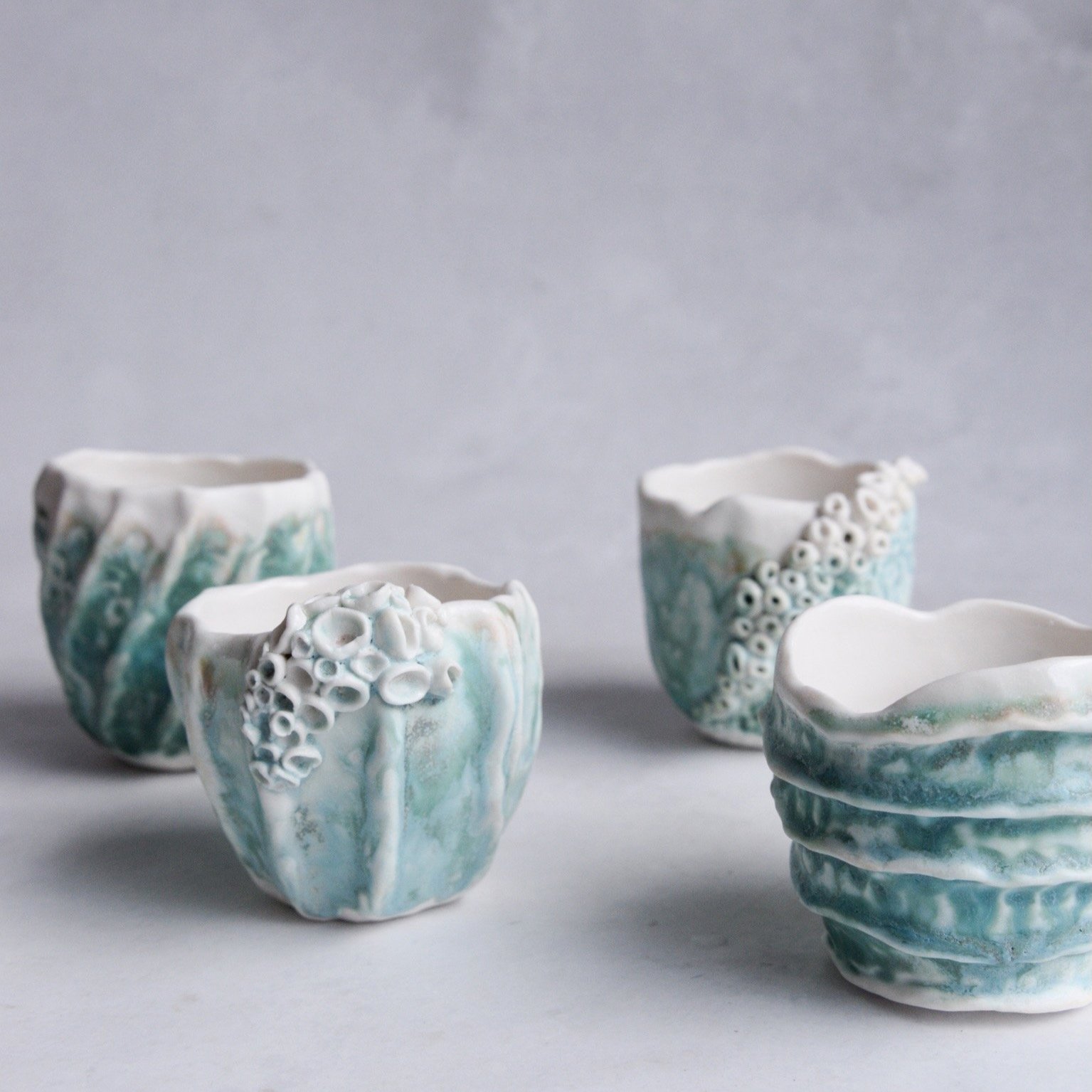 Image 1 of 9
Image 1 of 9

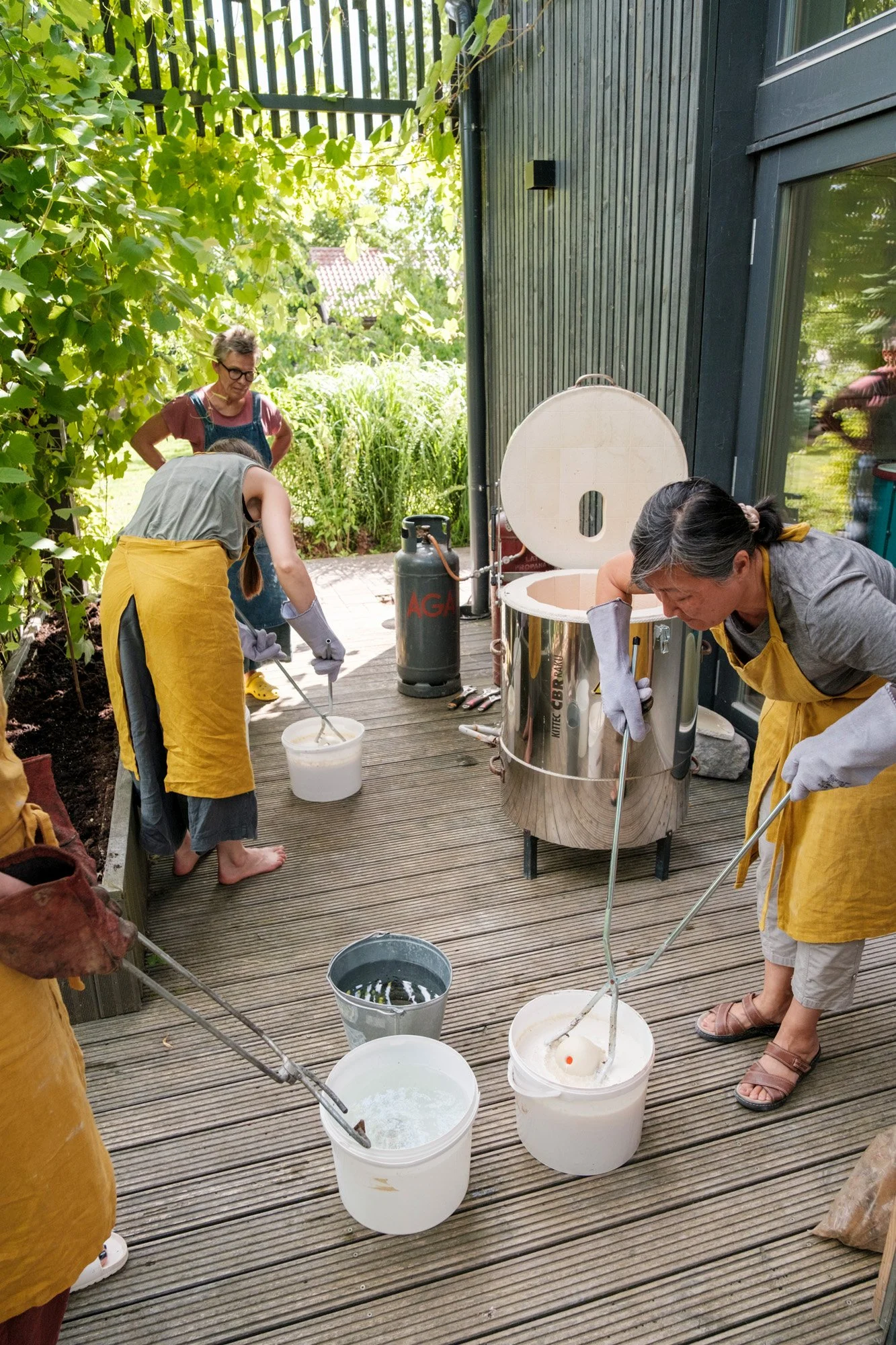 Image 2 of 9
Image 2 of 9

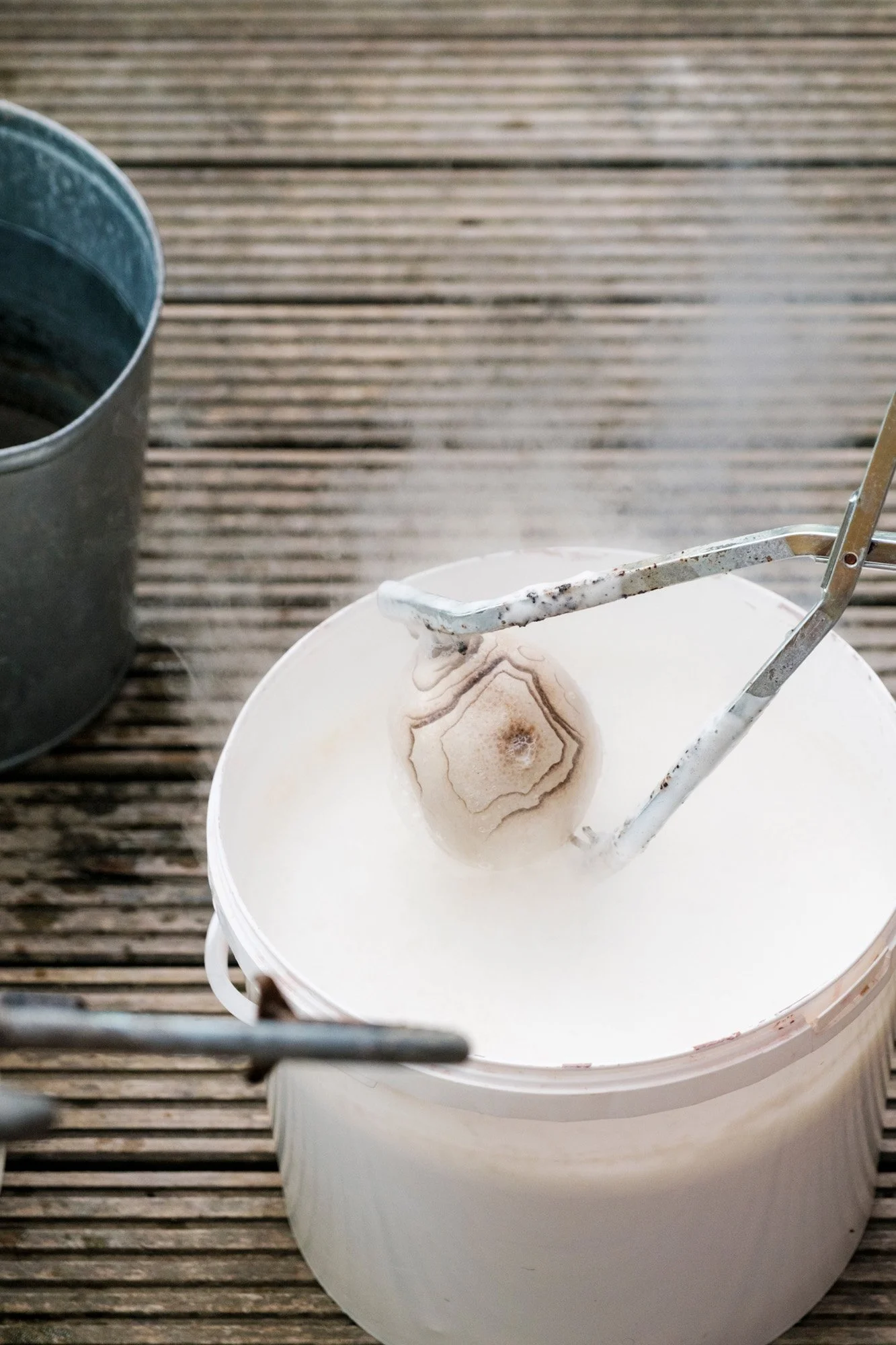 Image 3 of 9
Image 3 of 9

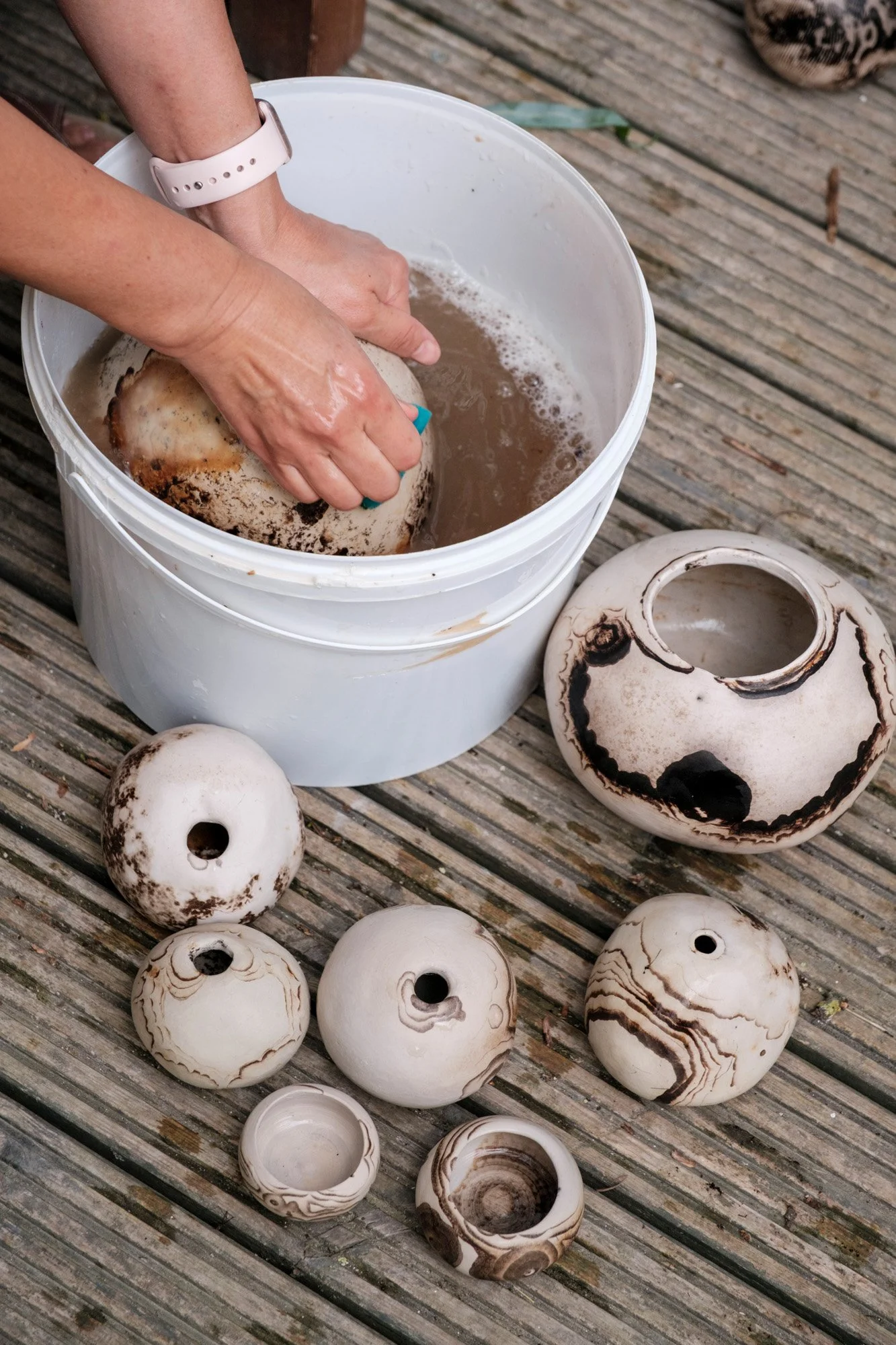 Image 4 of 9
Image 4 of 9

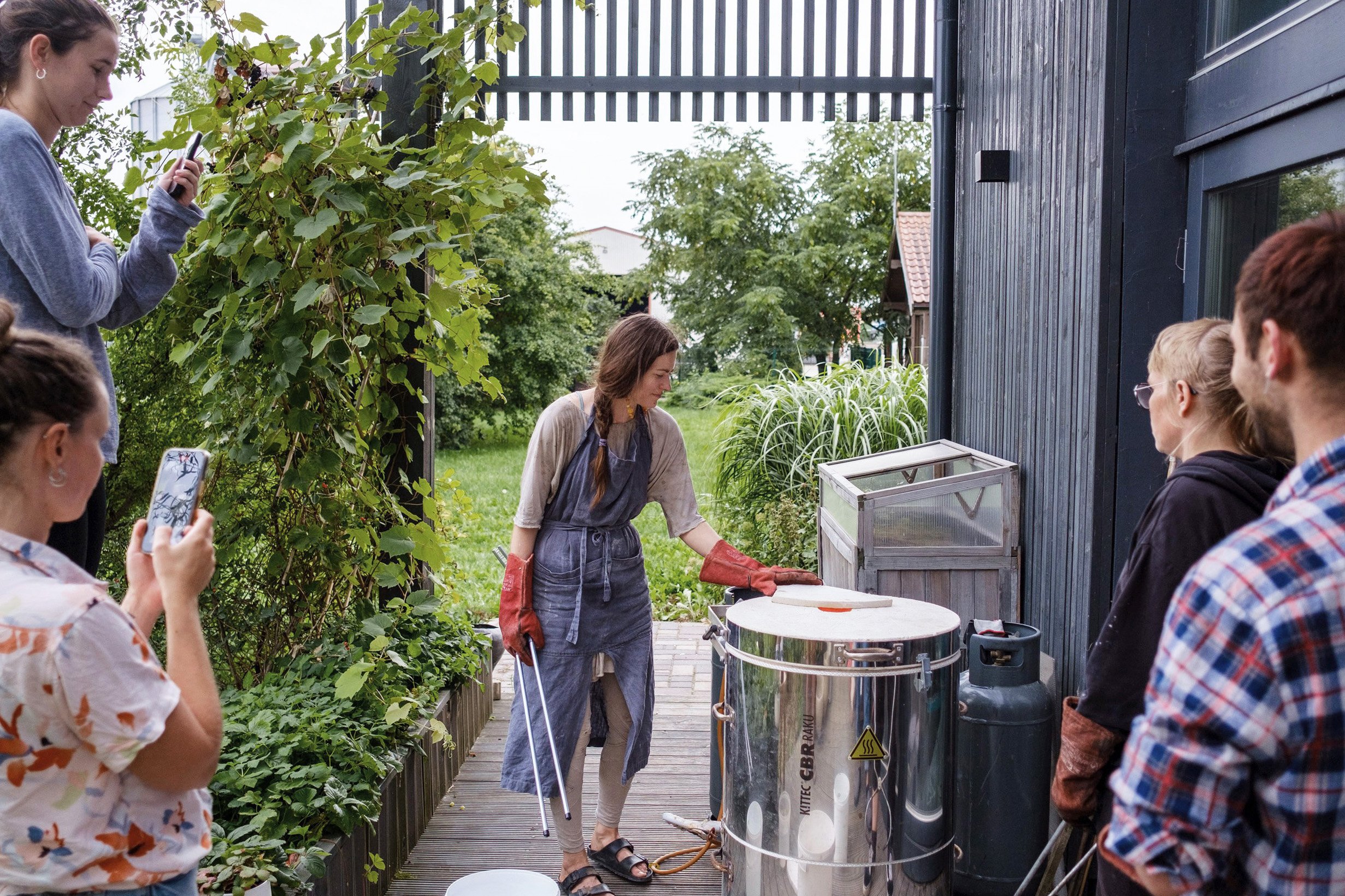 Image 5 of 9
Image 5 of 9

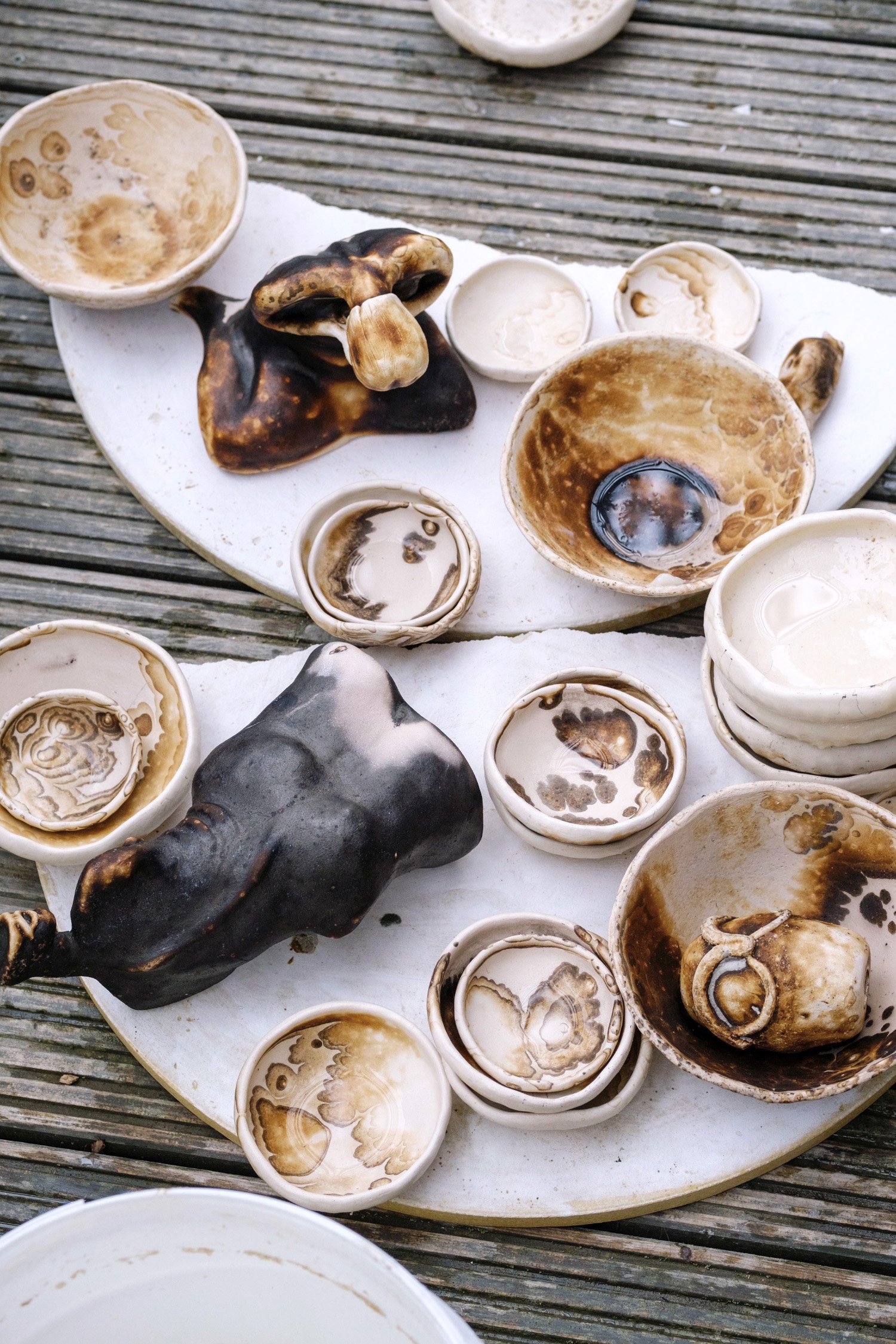 Image 6 of 9
Image 6 of 9

 Image 7 of 9
Image 7 of 9

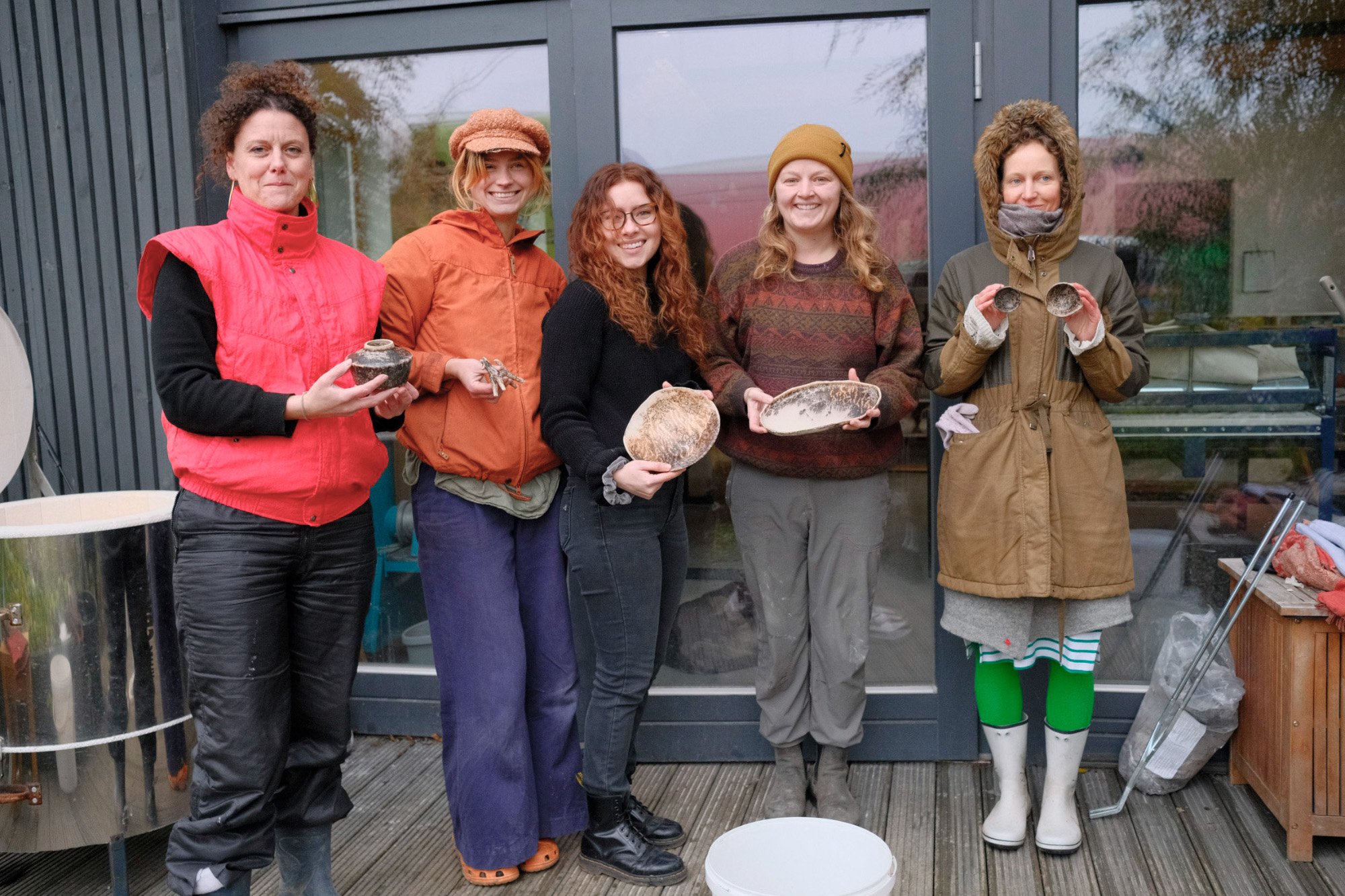 Image 8 of 9
Image 8 of 9

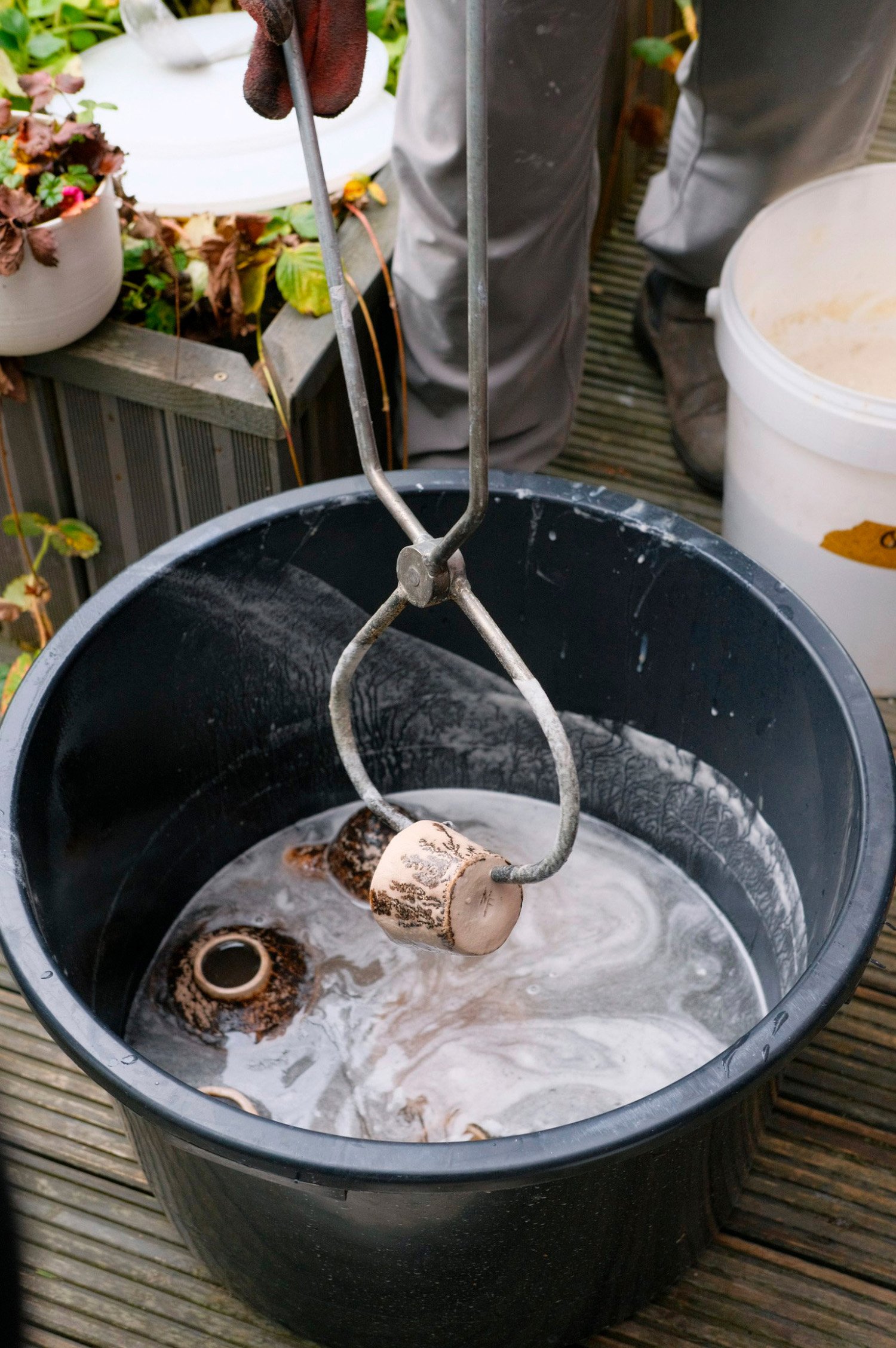 Image 9 of 9
Image 9 of 9










Baltic Raku firing
Obvara or Baltic Raku ceramics were common in the Baltic States, Belarus and some regions of Russia until the end of the 19th century. Its uniqueness lies in the special technique, where rye flour leaven is used instead of glaze. This ecological technology has become relevant again in the 21st century.
During the process, the works are heated to 900 C in a gas kiln for 4 hours and then taken out hot with tongs and dipped in fermented flour leaven, where they acquire a unique pattern. This treatment creates a wonderful color variation from creamy beige to brown and black.
Like other low-temperature alternative firing techniques, obvara firing is decorative and such works are not intended for everyday use. Best suited for sculptural works, as well as decorative bowls and vases for dried flowers.
We personally love functional ware and have found that this technique works wonderfully to making display bowls, containers for wooden utensils, and tea storage jars.
Please select this class as addition to the hand-building or wheel throwing class or come with your ready made, biscuit fired pieces to join the firing.
Preferably your pieces should be made from the special raku stoneware, polished/burnished, fired to 980-1100 C before this firing.
Workshop includes
Gas raku firing (3-5hours) with submerging the hot pieces in leaven mixture.
Class pricing offered is for a group of 1-4 persons, price per person. Please prepare up to 5 small-medium pieces for the firing.
Work should be made from white stoneware and biscuit fired to 980-1000C beforehand. We recommend Raku Body W 3005 K129 (Sibelco) (it’s Flame-resistant). It is advised to have them polished before firing to give better surface for the Raku to work its magic on.
Organised on-request, reach out to laimaceramics@gmail.com for details and available dates.
Obvara or Baltic Raku ceramics were common in the Baltic States, Belarus and some regions of Russia until the end of the 19th century. Its uniqueness lies in the special technique, where rye flour leaven is used instead of glaze. This ecological technology has become relevant again in the 21st century.
During the process, the works are heated to 900 C in a gas kiln for 4 hours and then taken out hot with tongs and dipped in fermented flour leaven, where they acquire a unique pattern. This treatment creates a wonderful color variation from creamy beige to brown and black.
Like other low-temperature alternative firing techniques, obvara firing is decorative and such works are not intended for everyday use. Best suited for sculptural works, as well as decorative bowls and vases for dried flowers.
We personally love functional ware and have found that this technique works wonderfully to making display bowls, containers for wooden utensils, and tea storage jars.
Please select this class as addition to the hand-building or wheel throwing class or come with your ready made, biscuit fired pieces to join the firing.
Preferably your pieces should be made from the special raku stoneware, polished/burnished, fired to 980-1100 C before this firing.
Workshop includes
Gas raku firing (3-5hours) with submerging the hot pieces in leaven mixture.
Class pricing offered is for a group of 1-4 persons, price per person. Please prepare up to 5 small-medium pieces for the firing.
Work should be made from white stoneware and biscuit fired to 980-1000C beforehand. We recommend Raku Body W 3005 K129 (Sibelco) (it’s Flame-resistant). It is advised to have them polished before firing to give better surface for the Raku to work its magic on.
Organised on-request, reach out to laimaceramics@gmail.com for details and available dates.







